Elan Valley, Powys
The Victorians built a vast chain of dams and reservoirs high in the Cambrian Mountains to supply water to Birmingham. The 70-square-mile (181sq km) estate is managed by Welsh Water, whose job is to keep the water sparkly clean – which they do by keeping the surrounding landscape as naturally pristine as possible. A century of careful stewardship has made Elan Valley a wildlife paradise – and it’s also gorgeous to look at on a scenic drive/cycle around the reservoirs. You can hire bikes from the visitor centre, which is open year-round.

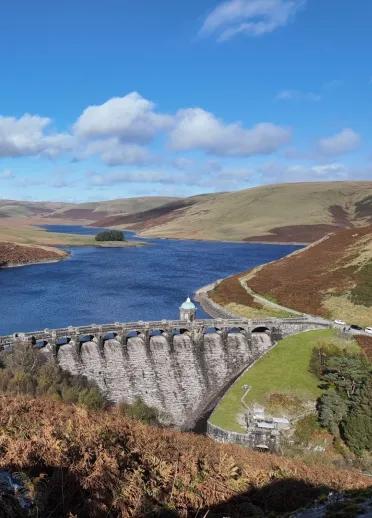
Cardigan Bay Marine Wildlife Centre, New Quay
You’ve got a decent chance of spotting Britain’s biggest resident pod of dolphins almost anywhere along Ceredigion’s southern coast, and there are plenty of boat trips for hire. But to help support conservation work, head for the Wildlife Trust’s Cardigan Bay Marine Wildlife Centre in New Quay. They run survey trips out into the bay, complete with underwater microphone, so you can eavesdrop on dolphin gossip. Back at base, there’s plenty of information about dolphins, porpoises, seals, whales, sharks, sunfish, turtles, and all the other residents of Cardigan Bay.
GreenWood Forest Park, Eryri (Snowdonia)
One of the best family attractions in North Wales, GreenWood Forest Park prides itself on being eco-friendly: it has the world’s only people-powered roller coaster, and the UK’s first solar-powered ride, the Solar Splash. There’s also active adventure play, mazes, archery, jungle boats, live shows and crafts, furry and feathered residents – and an indoor Enchanted WoodBarn as a rainy-day back-up.
Senedd, Cardiff Bay
The Senedd building was designed for open democracy: anyone can walk in and watch our politicians at work, courtesy of a raised gallery above the debating chamber. But the Richard Rogers-designed building also has a strong ethos of sustainability. It’s ventilated naturally by a cowl on the roof, the heating is managed by a biomass boiler and geothermal pipes deep beneath the old docks, and rainwater is harvested from the roof to flush the loos. Traditional Welsh materials like slate and oak also feature strongly.
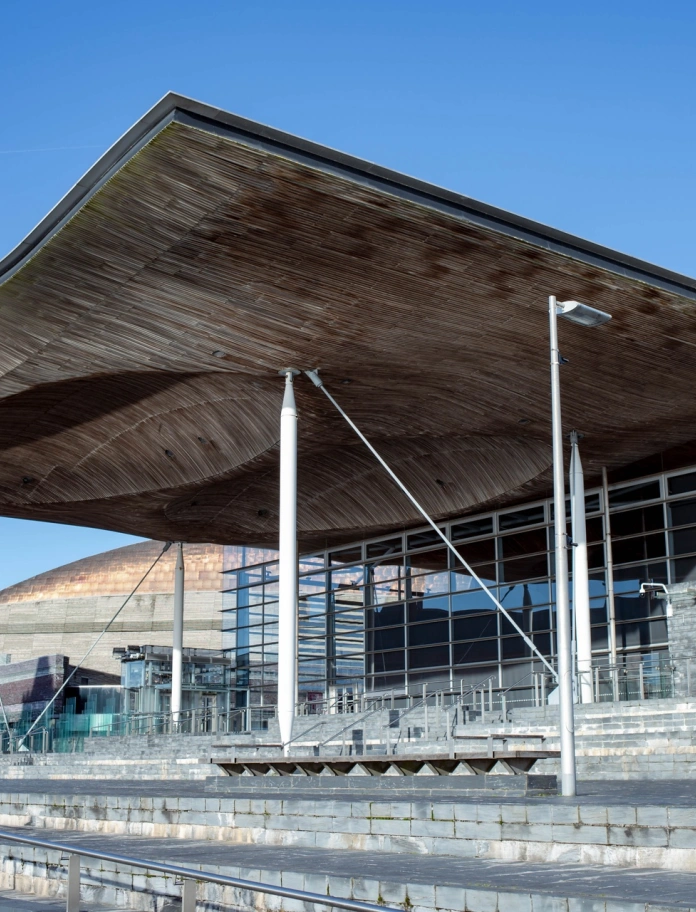
Lammas Ecovillage, Pembrokeshire
The pioneering self-sufficiency guru John Seymour moved to West Wales in the 1960s, one of many eco-idealists who came to create alternative communities here. The same ethos lives on at the Lammas Ecovillage - a collective of nine ‘Hobbit’ houses, clustered around a central community hub. They aim to use environmental design, green technology and permaculture to show that it’s perfectly possible to live lightly in a landscape in which people are part of the wider ecosystem. It’s also about inspiring others to follow in their (low-carbon) footsteps: they run guided tours every Saturday from May to September.
Ffarm Moelyci, Bangor
The 320 acres (130ha) of Ffarm Moelyci seemed destined to become a holiday-home development until the local community clubbed together to buy it in the early 2000s. It’s now run as an environmentally-friendly farm, with 60 allotments for locals, while the Blas Lôn Las shop/café champions local food and drink.
Denmark Farm Conservation Centre, Ceredigion
When the Shared Earth Trust took over Denmark Farm in 1987 they set about reversing the damage done by intensive farming by restoring the biodiversity of its grassland, wetland, woodland and scrub habitat. They’ve succeeded admirably: the number of bird species has tripled, for example – and they want to show everyone how it’s done. They do all types of conservation courses, family events, and residential visits. The name, by the way, is original: the farm was founded in the early 1800s by a Welshman who had made his fortune (or at least, enough to buy a farm) working in London’s Denmark Hill.
Anglesey Sea Zoo
Anglesey Sea Zoo has over 100 different species of fascinating fish and sea life that live around the coast of Britain on display. The zoo prioritises sustainability and conservation, with exhibits highlighting local marine habitats and species conservation efforts. It was the first aquarium in the UK to be powered by solar energy and 95% of waste on site recycled or composted. The zoo developed and is running captive breeding, release, conservation and education programmes. Anglesey Sea Zoo pump water directly from the Menai Strait, into the tanks, to create a natural environment in the aquarium. There are handy water refill stations around the site. The zoo lead is also involved tree planting and organising regular beach clean-ups along the Menai Strait.
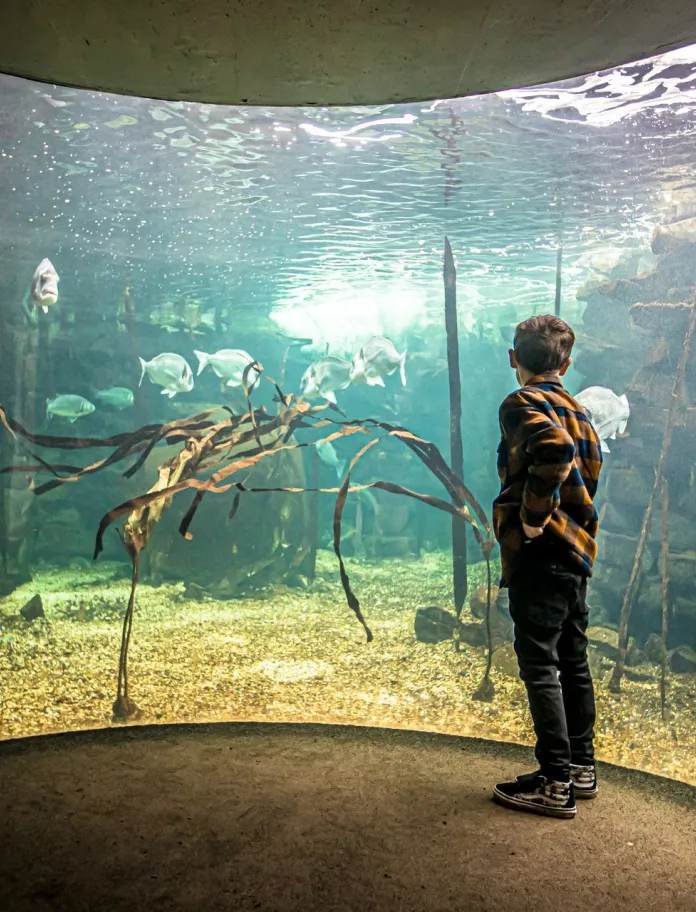
Glaslyn Nature Reserve, Powys
Glaslyn Nature Reserve is Montgomeryshire Wildlife Trust’s biggest nature reserve, and home to bird species such as the Golden Plover, Red Grouse, Skylark plus over 283 species of plant. The reserve is made up of heathland and moorland. It offers all year round, but particularly during the summer months. The cottongrass turns the reserve white, shortly followed by the purple blooms of the flowering heather.
Lisvane and Llanishen Reservoirs, Cardiff
Lisvane and Llanishen Reservoirs in North Cardiff, South Wales is a hub for health, wellbeing, water activities and biodiversity. It's one of four protected green areas in Cardiff and home to wildlife including bats, otters, snakes and toads and has two Sites of Special Scientific Interest (SSSI) for waxcap fungi and overwintering birds. Offering water activities including sailing, canoeing, and kayaking and Stand-up paddleboarding (SUP). Enjoy circular paths around the reservoirs, with conservation areas,, accessible bird hides, an outdoor education area and a nature trail. The visitor centre offers spectacular views across the reservoirs and features the finest Welsh produce.
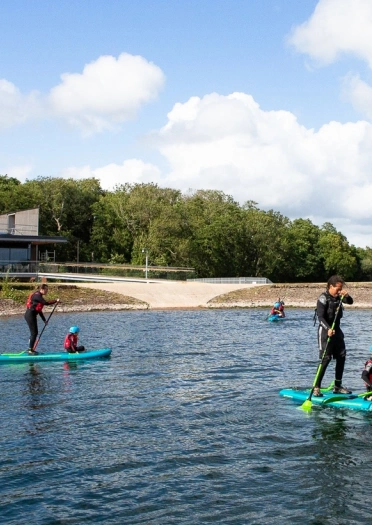
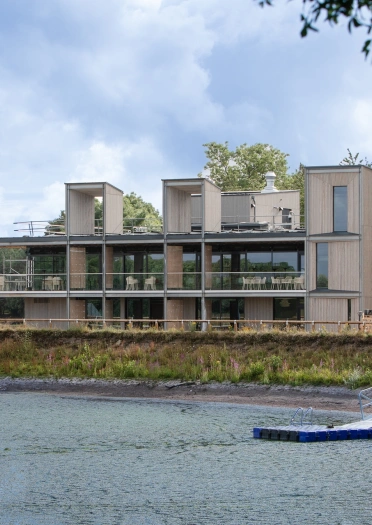
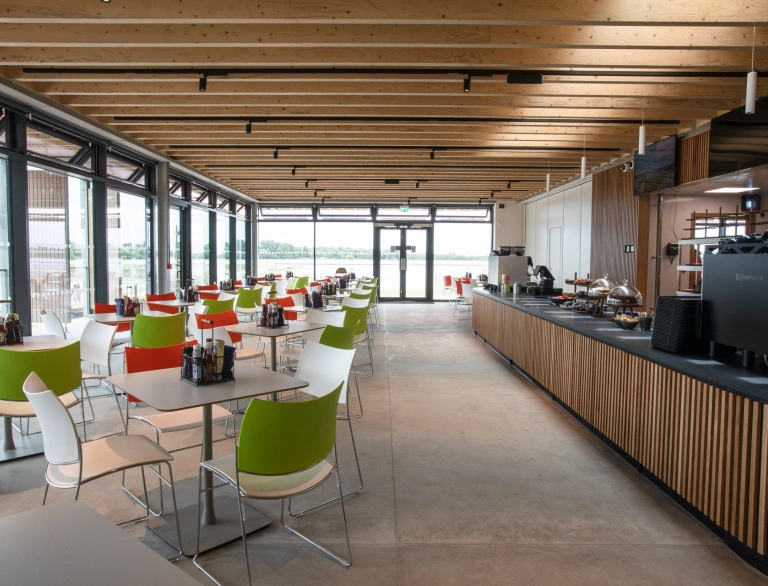
The Bug Farm, Pembrokeshire
Dr Beynon's Bug Farm is a visitor and research centre in Pembrokeshire Coast National Park. Wildlife conservation, sustainable food and farming and invertebrates (or 'bugs') are at the heart of this 100 acre wildlife reserve and working farm. Grub Kitchen is the UK's first edible insect restaurant. Try edible insect dishes including VEXo Bolognese, Grub’s signature gourmet bug burger and treat yourself to Cricket Cookies.


National Parks
Our three National Parks – Pembrokeshire, Bannau Brycheiniog (Brecon Beacons) and Eryri (Snowdonia) – cover a fifth of Wales’ land surface. They were established with three main goals: to conserve and enhance the natural beauty, wildlife and cultural heritage; to help visitors understand and enjoy the parks’ special qualities; and to look after the communities who live there. They’ve succeeded: go to their visitor centres to find out how to get the most out of your visit, spend a few quid in the shop, and you’ll be helping to support their great work.
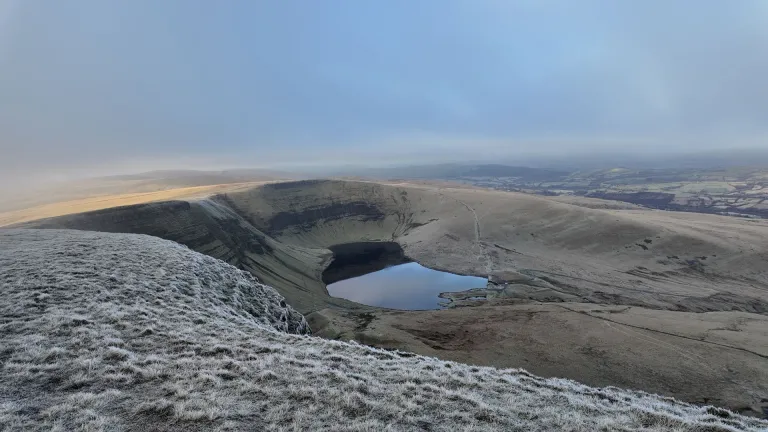
National Trust Wales
The National Trust is the biggest landowner in Wales, which brings the hefty responsibility of looking after some of our most precious landscapes. In the past decade they’ve introduced many pioneering green energy systems into their properties, slashed their carbon footprint, and actively promoted ways in which we can all live greener lives.
Chapters - Hay-on-Wye
There's a strong emphasis on sustainability at Chapters, Hay-on-Wye. This Michelin star restaurant offers a range of delicious dishes, including vegan meals. The restaurant gained a Michelin Green Star, which feature restaurants at the forefront of the industry when it comes to their sustainable practices Chapters produce a changing set menu featuring local produce sourced from the best suppliers in the local area. They also use foraged ingredients on their menu and food grown from the kitchen garden.
UNESCO Dyfi Biosphere
UNESCO Dyfi Biosphere has several important nature reserves, plus some of the finest landscapes in Europe coupled with a community that care about this special place. With ancient woodlands, lakes, coastal paths and mountains and lowland wet grassland and salt marshes, it is home to rare species. Enjoy the beautiful national trails in this special mid Wales environment.
Read more about why the Dyfi Biosphere is a wildlife paradise at all times of year.
Further information
Traveline Cymru is a useful public transport journey planner.
There are a number of apps and online maps where you can to find the location of electric vehicle charging points across Wales. Several National Trust properties across Wales have EV charging points.
Help Wales become the first Refill Nation by using nearby Refill Points to fill up your water bottle before you head off. Find out more, including how to download the free Refill app and find your nearest Refill Point on the Refill Wales website.





